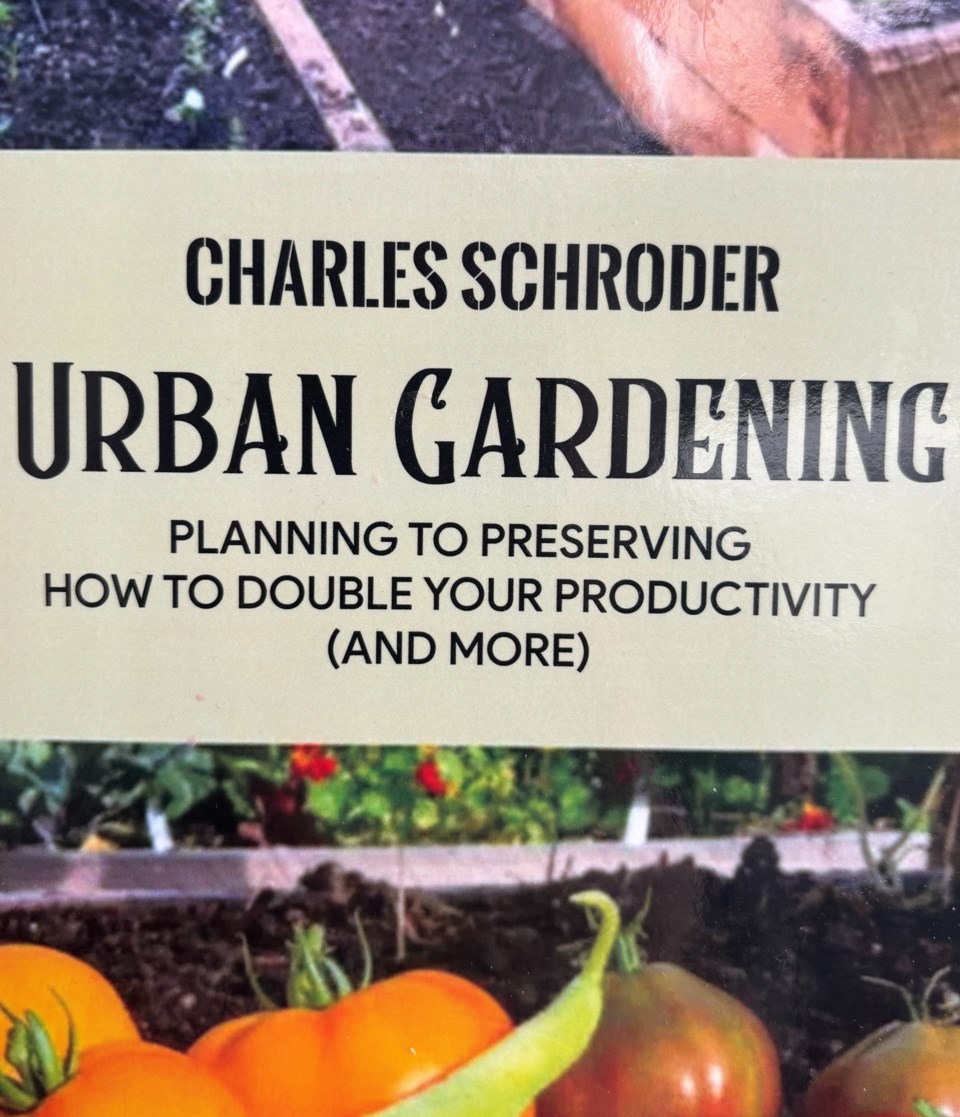With high food prices burning through our pockets, most of us are searching for less expensive ways to eat tasty, nutritious foods. With summer fast approaching, the option to grow our own garden veggies is on the table. Who doesn’t like freshly picked juicy tomatoes, crunchy carrots and sweet garden peas?
There are many great books that provide basics for seeding an edible garden with lush photos. However, St. Albert is in the province’s Zone Three meaning we have one of the shortest windows for gardening.
In dealing with a short growing season, we can save a great deal of time, energy and resources by relying on experienced gardeners from the area who learned the best techniques through trial and error.
Longtime St. Albert resident Charles Schroder has just released Urban Gardening, a 211-page book on how to double a vegetable garden’s productivity for both novice and seasoned green thumbs. The manual is more than simply reaping an abundant harvest.
It focuses on solutions that incorporate climate-conscious gardening practices, thereby decreasing the carbon footprint. At a time when the planet is facing massive challenges, this book can empower gardeners to develop solutions to problems and promote sustainability.
Urban Gardening’s format is straightforward with practical, no-nonsense advice based on Schroder’s personal knowledge. There are limited photos in the book, however the conversational style makes for easy reading. The layout is organized starting from soil preparation and the best tools to use all the way to keeping disease, pests and critters under control.
One of my favourite chapters is a small section on companion planting of different vegetables. Companion planting attracts more pollinators and keeps vegetables healthy and relatively pest free. He mentions marigolds and nasturtiums deter many pests while poppies, marigolds and Batchelor buttons attract pollinators that fertilize squash, peas and berry blossoms.
Schroder also adds a chart that lists vegetable companions and antagonists. For the novice gardener, it’s a handy chart that takes the stress out of deciding which veggies to plant next to each other to maximize diversity, increase the garden’s yield and deter nuisances.
Another section worth reading is one on watering, especially since Alberta is predicted to enter a drought phase. He encourages the use of rainwater for two reasons: it is cheaper, and plants prefer rain to tap water.
He's even developed a recycled root feeder anyone can make with tin cans. To minimize wasting water, especially for larger plants such as squash, peppers, tomatoes, potatoes and zucchini, he recommends removing the bottom of the cans. He then digs the cans into the soil with the bottom down and the top at ground level. When water is poured into the can, it drains directly into the roots, thereby minimizing water evaporation.
Schroder takes a holistic and cost-cutting approach to gardening, similar to that of our forefathers. Boasting several decades of experimentation, he has progressed from a casual gardener to a passionate, efficient green thumb sporting a strongly developed environmental consciousness.
Although Schroder lives in Zone 3, his strategies have the potential to be a go-to guide for people seeking enrichment even in hotter zones.
Urban Gardening, Planning to Preserving How to Double Your Productivity And More, is available through Amazon.



